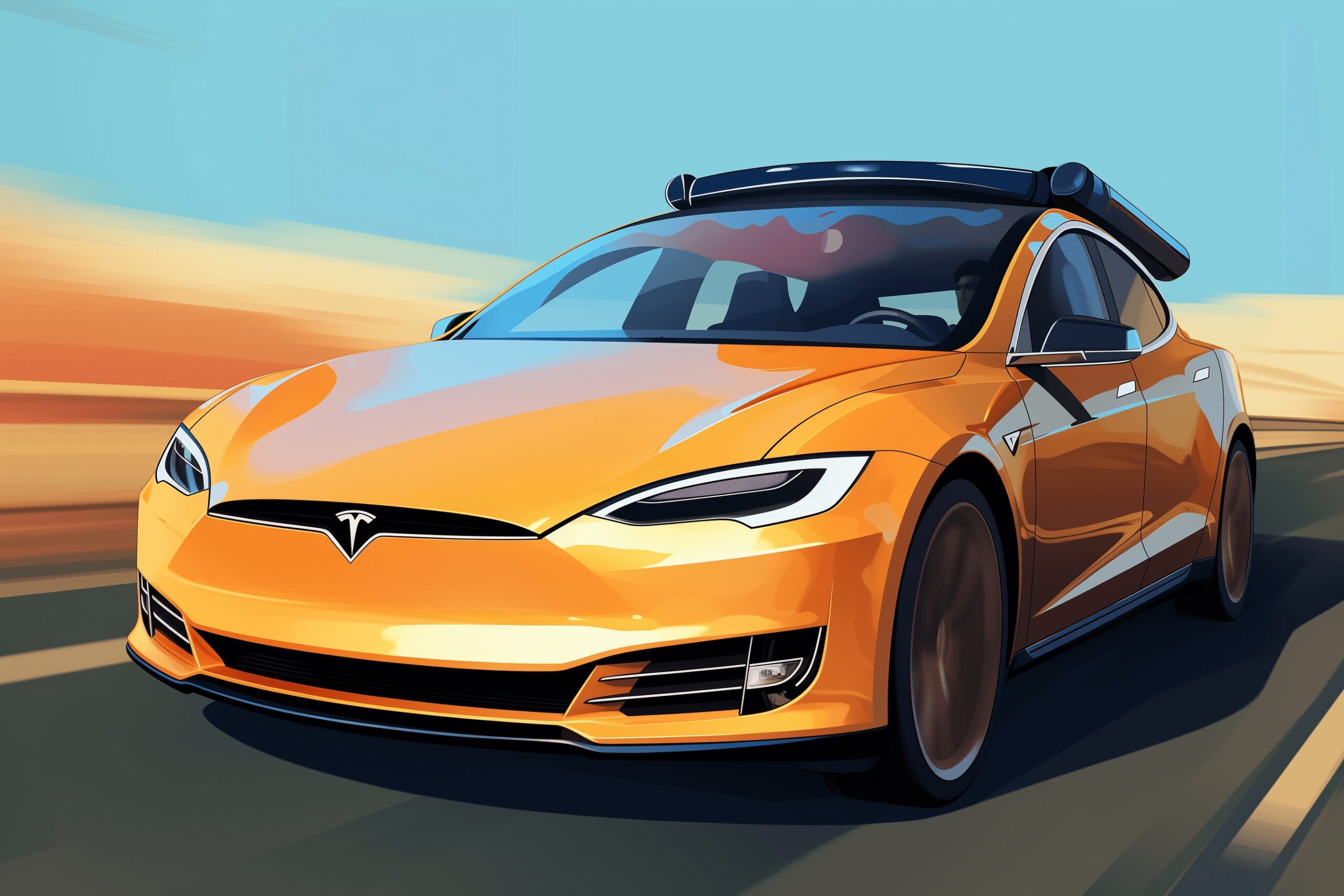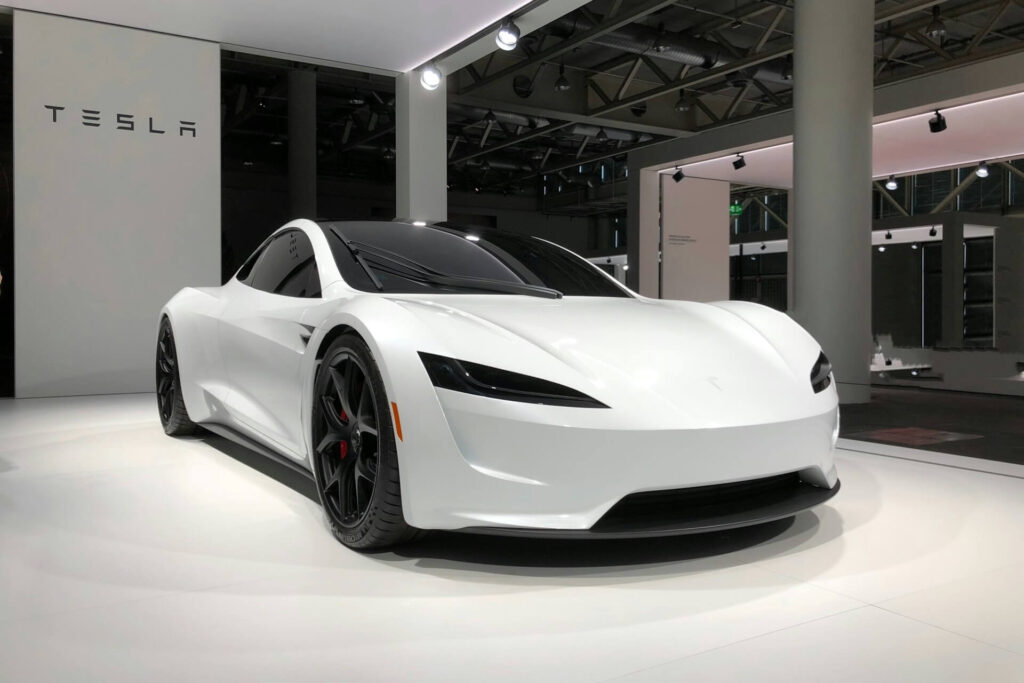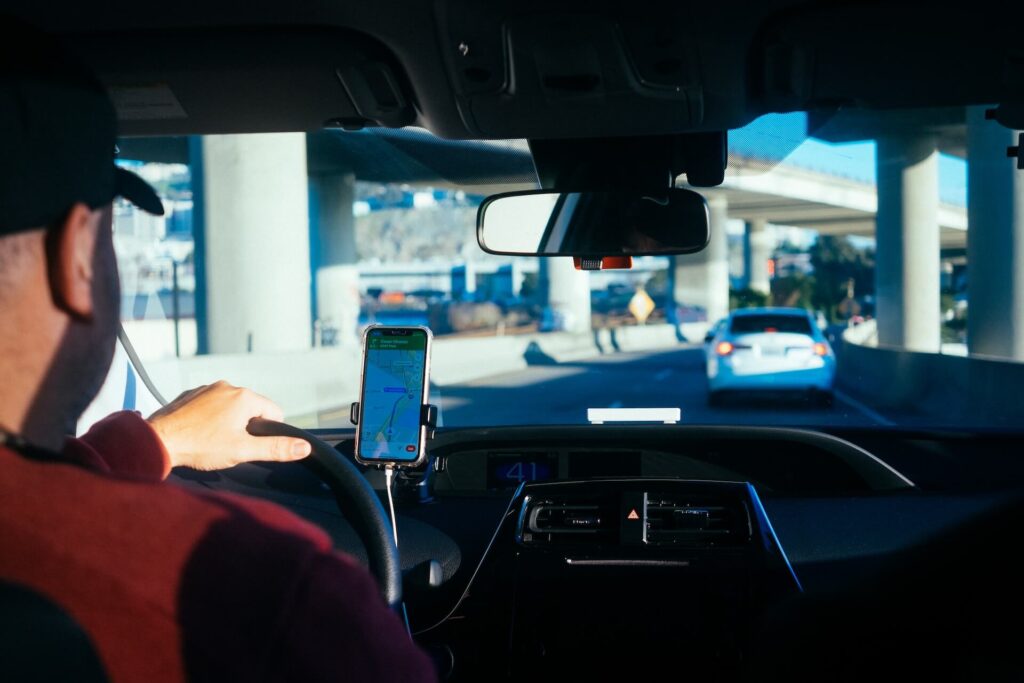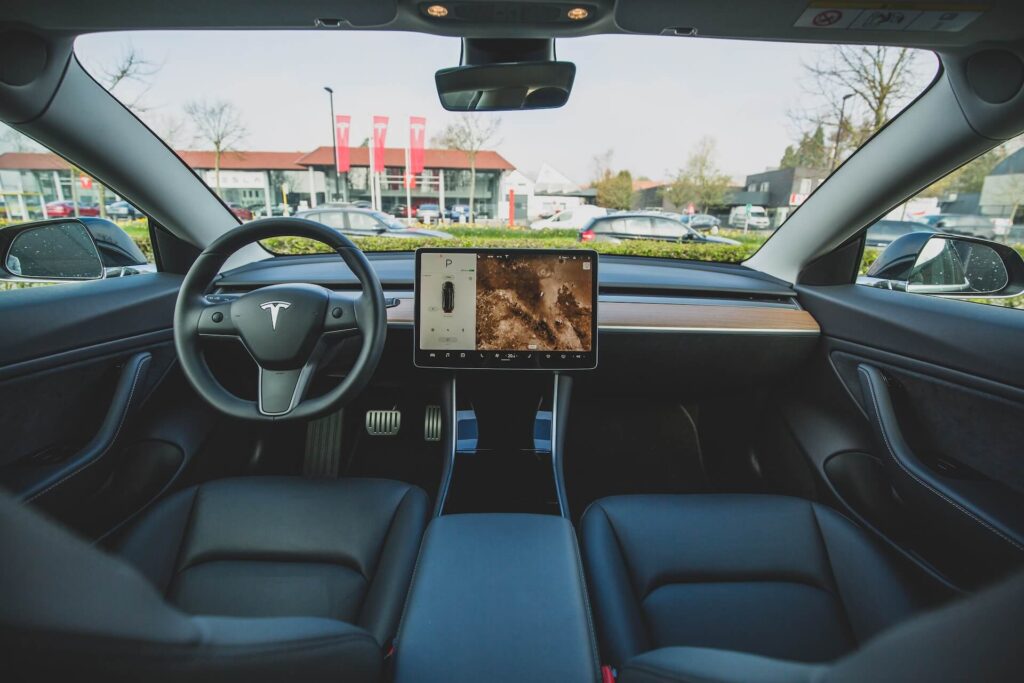
As an Amazon Associate, Modded gets commissions for purchases made through links in this post.
Recently, images surfaced on the internet of a concept vehicle from Tesla, the electric vehicle (EV) giant from California. We know this car as the robo taxi Tesla, and company CEO Elon Musk has a distinct fascination with the machine. Will we get a robotaxi from Tesla anytime soon? Who else has created the robotaxi concept? Here’s everything you need to know about this Tesla fascination.
Is There a Robotaxi Tesla Coming?

Let’s start with the origin of the robotaxi Tesla people are talking about. The rumored vehicle stems from Walter Isaacson’s biography of Elon Musk, aptly titled “Elon Musk.” This book sold nearly 100,000 copies in the first week, but the headlines have come from what Isaacson revealed in the book.
One of the big stories from “Elon Musk” was Musk’s obsession with the Tesla robo taxi concept. In fact, Axios reports the Tesla CEO was so fixated on the robo taxi that he went against the company’s plans to build a $25,000 EV — a more affordable option than the rest of the EVs on the automobile market. However, his fellow executives persuaded him to table the robotaxi concept for now.
The concept vehicle is a two-seater resembling the cybertruck — another highly anticipated machine the auto industry has been waiting on but to no avail. The book contains an image of Franz Van Holzhausen (chief designer at Tesla) standing next to a prototype, resulting in the only photos we know of the existing robo taxi.
Robotaxi Reality

So, is the robotaxi Tesla coming? Is it even a real car? Currently, there are no concrete plans to begin production on this vehicle. The robotaxi Tesla relies on fully autonomous cars driving nationwide — something the automobile industry has yet to achieve.
According to the Society of Automotive Engineers (SAE), there are six levels of autonomy between 0 and 5. The most capable cars currently are those with the Mercedes-Benz DRIVE PILOT feature. With DRIVE PILOT, your vehicle is at level 3 autonomy — meaning you don’t have to be attentive at the wheel when driving unless the car requests you take control.
One of the vehicle’s most significant features is the absence of a steering wheel. The objective is to take driving entirely out of the owner’s hands, which would cause concerns with federal regulators. If cars didn’t operate autonomously, the robot taxi would have difficulty getting past the Department of Transportation (DOT) and into customer garages. Isaacson’s book says Musk does not want the vehicle to include pedals or a steering wheel, signaling he’s entirely buying into autonomous driving.
What Is the Purpose of the Tesla Robotaxi?

The robo taxi would serve multiple purposes for the average person. Primarily, you’d use dispatch the vehicle to go to the store for you and run other errands. With online grocery pickup rising worldwide, you could get your supplies without relying on delivery apps with those extra fees. In Musk’s mind, this futuristic vehicle would eliminate the need for people to own cars. Instead, they could send a robo taxi to do their work for them.
The robotaxi would also serve as a disruption in the rideshare industry. Cities could adopt the robotaxi Tesla and make it widespread across town. You could get in the autonomous vehicle and let it take you wherever you need to go! Plus, you can ensure your ride is environmentally friendly because the car has a minimal carbon footprint. Tesla vehicles have no carbon emissions, making them a more eco-friendly option than your average gas-powered machine.
What Autonomous Taxis Already Exist?
If you want to ride in an autonomous taxi, the Tesla robo taxi wouldn’t be your first opportunity. This concept has already debuted in some cities worldwide. Take a trip across the Golden Gate Bridge into San Francisco to see the nation’s first self-driving taxis.
A pair of companies, Waymo and Cruise, have entered cities like San Francisco and Phoenix to carry passengers around town. In August 2023, the California Public Utilities Commission voted to let both companies operate self-driving vehicles inside San Francisco throughout the day. Previously, the city only permitted night driving when there was less traffic — but the concept is seeing a nice boost.
Cruise (owned by General Motors) and Waymo (Alphabet’s self-driving taxi) also plan to send their vehicles to New York City, Miami, Los Angeles and other large metropolitan areas. The early results from these cars show the future of rideshare in the United States will center around autonomous vehicles. So, what does that mean for Tesla and Musk’s robotaxi dream?
The primary difference between Tesla and the Waymo and Cruise vehicles is the ownership. The average person could buy a robo taxi and keep it for themselves in a garage or driveway. However, the Waymo and Cruise machines are offered as services inside cities where you’re not driving very fast in bumper-to-bumper traffic.
Tesla would need to prove to regulators that its self-driving cars are safe to operate and won’t make mistakes on the road. The EV manufacturer is already facing pressure from the U.S. Senate following a Reuters investigation. The news outlet alleges that Tesla has blamed drivers for defective parts despite the ineffectiveness of the initial production.
What Pros and Cons Do Robo Taxis Bring?
Robo taxis could be a solid addition to the automotive industry, depending on how you look at it. The Tesla version would help people with disabilities as they would rely less on a vehicle to do errands. Plus, it would make the streets slightly safer because robots make fewer mistakes than people. Human error causes wrecks, whether falling asleep at the wheel, texting while driving or operating a car while intoxicated.
The primary disadvantage would be interfering with emergency response vehicles. People know they must pull over when they hear an ambulance or firetruck. Still, a robo taxi might need help in this situation. Automakers must ensure these vehicles know to pull over and stop because every second matters when lives are on the line. This concern was among the chief arguments against permitting Waymo and Cruise inside San Francisco.
Anticipating the Robo Taxi Tesla
Imagine going back in time and telling Henry Ford the concept of a self-driving taxi running on electric power. He might say that you’re crazy! However, the future of cars is heading toward electrification and autonomous driving. Will we see this idea pan out with a robotaxi Tesla? The concept is a figment of our imagination now. Still, it could happen in the next decade if technology continues to improve.
Stay up to date with the latest by subscribing to Modded Minute.
Author
Jack Shaw is a senior writer at Modded. Jack is an avid enthusiast for keeping up with personal health and enjoying nature. He has over five years of experience writing in the men's lifestyle niche, and has written extensively on topics of fitness, exploring the outdoors and men's interests. His writings have been featured in SportsEd TV, Love Inc., and Offroad Xtreme among many more publications.






